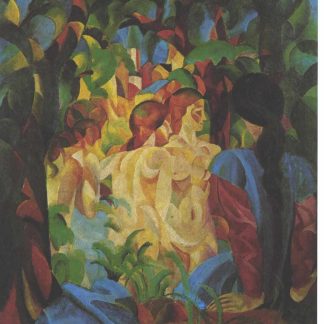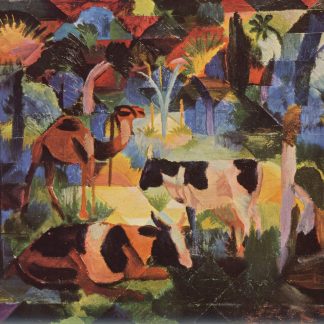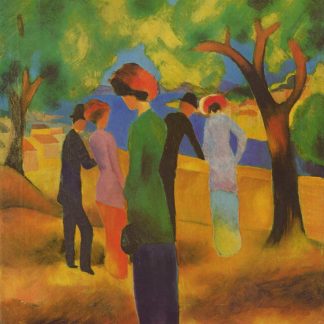August Macke was a German painter who lived from 1887 to 1914. He was a prominent member of the Blaue Reiter, a group of avant-garde artists who sought to challenge traditional artistic conventions and explore new forms of expression. Macke is known for his use of bright, vivid colors and his ability to capture the essence of his subjects with economy and clarity.
Macke’s work is marked by its sense of optimism and its celebration of the beauty of the natural world. He was particularly interested in the interplay of color and light, and many of his works depict the luminous effects of sunlight on natural forms. Some of his most famous works include “Lady in a Green Jacket,” “The Trough,” and “Tunisian Garden,” which showcase his mastery of color and form.
Unfortunately, Macke’s career was cut short when he was killed in action during World War I at the age of 27. Despite his short career, however, his influence on the development of modern art was significant. He is now considered one of the most important German painters of the early 20th century, and his works continue to be celebrated for their beauty, their energy, and their commitment to artistic experimentation.
Showing all 3 results
-

Bathing girls with town in the Background
Macke, August From $28.69 Select options This product has multiple variants. The options may be chosen on the product page -

Landscape with Cows and Camel
Macke, August From $28.69 Select options This product has multiple variants. The options may be chosen on the product page -

Woman in a Green Jacket
Macke, August From $28.69 Select options This product has multiple variants. The options may be chosen on the product page
Showing all 3 results



